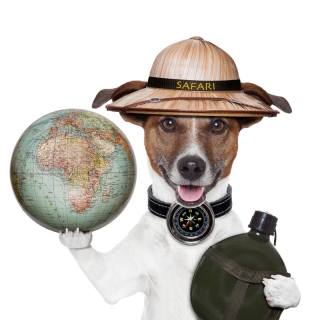Training Goals

In my last post I wrote about the training process and how it is so important to break every task you’d like a dog to learn into tiny segments in order to orchestrate many frequent, measurable, successful moments to build upon and link together to create an easily navigable staircase to your destination.
With that in mind, today I’m thinking about goals. You won’t get anywhere if you don’t know both where you are today and where you’re headed. One must have a clear starting and end point in mind to properly draw up a functional map.
This morning as I pondered where I would like to go on my training journey with Laz and Mars, I realized I was still thinking in too broad of terms. Ideas such as “learn a new dog sport”, “training for ring sport”, or event “compete in ring sport” are too vague to actually help me achieve anything specific. A clear and solid end goal is necessary to use as a navigation point. For example, there is a big difference between thinking I would like to drive from California to Illinois and planning a trip from my house in Berkeley to my sister’s home in Beecher.
That said, while it is important to have an end goal in mind, it’s not good enough to only know where you want to go in the long run. You also must know where you’re going for every single training session or you may unintentionally pull yourself off course. You’ll need many mini-maps, one for each day! This then becomes your training plan. It is not a bad idea to start your plan by identifying your ultimate goal first and then working backwards until you get to wherever you are today as you starting point. This is an excellent way to make sure you don’t leave anything out.
It is true that even the best laid plans often go awry, but having a plan need not mean you never update or alter it, quite the contrary. Regular review and reassessment are important components of any training successful course. Flexibility is key to success; being prepared to make adjustments as new information pops up or when you hit bumps in the road.
In my case, it’s too early to know what Mars will be able to do as an adult dog. He’s still got a lot of development ahead and, training aside, time will also tell what is in store for him. But I’ve got to start somewhere and so I will pick a specific short-term goal and a loose long-term goal for him and then adapt as necessary as more information becomes available to me. For Laz, I’ve realized it is time for me to get down to business and decide exactly what I want us to accomplish as a team participating in an organized sport.
All of this may already be obvious to you. But even 20 years into my career I am still learning how to plan well for training. As I mentioned in my last post, I am not so good at precision and structure; my mind naturally works in broad, sweeping strokes and tends to gloss over detail. It’s a little embarrassing to admit all of my faults at this juncture, but I want to unravel what has kept me out of the competition game for so long and face it head on. Part of that journey is going to include blogging about my process. Hopefully this will help keep me on track and pushing forward.
I expected to feel stressed out by the idea that I had to identify a solid end goal for training so early in the game, but instead, it’s been a relief. Streamlining my thought process has brought clarity to my training sessions and it feels very good! Perhaps it was all the loosey-goosey ambiguity that made performance difficult for me. Now that I’m making my map and getting my strategy in place, I will prepare for my adventure appropriately and thoroughly and enjoy the ride.




